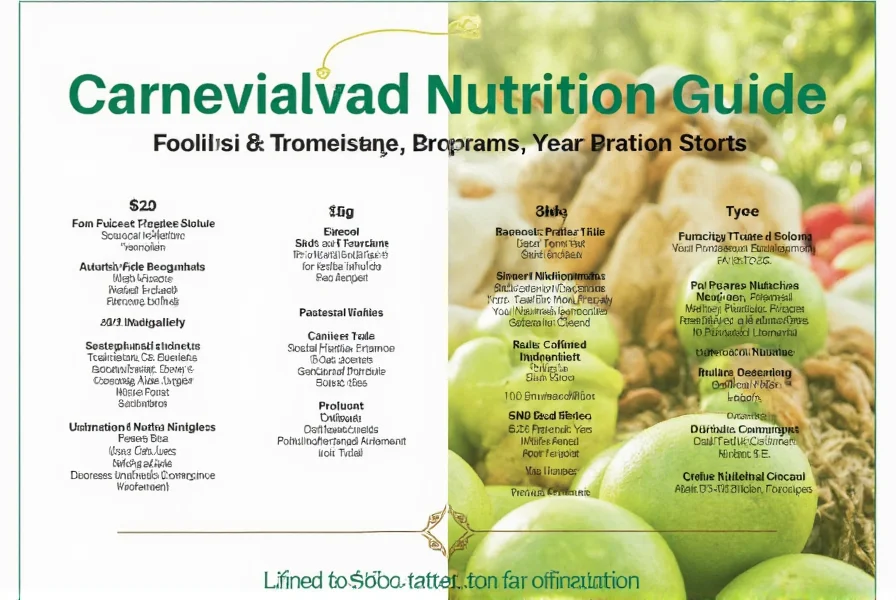Connecticut, known as the Nutmeg State, has developed a robust nutrition ecosystem that addresses the diverse dietary needs of its residents. The state's approach combines evidence-based guidelines with practical community programs, creating a framework that supports healthy eating from childhood through senior years.
Connecticut's Official Nutrition Guidelines
The Connecticut Department of Public Health has adopted dietary recommendations aligned with federal guidelines while addressing regional considerations. Connecticut's nutrition guidance emphasizes locally available foods, seasonal produce, and culturally appropriate meal planning for the state's diverse population. Unlike generic national guidelines, Connecticut's approach specifically addresses challenges faced in both urban food deserts and rural communities with limited grocery access.
State nutritionists have developed Connecticut-specific dietary patterns that incorporate regional agricultural products like apples, dairy, and seafood. These adaptations help residents follow practical eating patterns that reflect what's realistically available in Connecticut markets throughout the year.
State Nutrition Assistance Programs
Connecticut operates several key nutrition programs that serve different demographic groups:
| Program | Target Population | Key Features |
|---|---|---|
| Connecticut WIC | Pregnant women, new mothers, infants, children up to age 5 | Nutrition education, healthy food packages, breastfeeding support |
| SNAP-Ed Connecticut | Low-income individuals and families | Nutrition education, cooking demonstrations, budgeting skills |
| Farm to School Initiative | K-12 students across Connecticut | Local food procurement, garden-based education, culinary classes |
| Meals on Wheels CT | Seniors with limited mobility | Nutritionally balanced meals, social interaction, wellness checks |
Connecticut's Local Food System and Nutrition
The state's agricultural landscape significantly influences nutrition opportunities. Connecticut's "From the Farm to Your Table" initiative connects residents with fresh, locally grown produce through farmers markets, CSAs (Community Supported Agriculture), and farm stands. This program has expanded access to fresh foods in 32 previously underserved communities since 2020.
Connecticut's unique geography creates both challenges and opportunities for nutrition. Coastal communities benefit from fresh seafood, while inland regions focus on dairy, apples, and vegetable production. State nutrition planners have developed regional dietary patterns that maximize these local advantages while addressing specific community health needs.
Nutrition-Related Health Statistics in Connecticut
According to the Connecticut Department of Public Health's 2023 report, adult obesity rates have stabilized at 27.8%, slightly below the national average. However, significant disparities exist between urban and suburban communities, with Hartford reporting obesity rates 12% higher than Connecticut's wealthiest towns.
The state has made notable progress in childhood nutrition through school meal improvements. Since implementing updated nutrition standards in 2021, Connecticut schools have increased fruit and vegetable consumption by 35% among students. The state's diabetes prevention program has also shown promising results, with participants reducing their risk of developing type 2 diabetes by 58% through lifestyle changes.
Resources for Connecticut Residents
Connecticut residents have access to multiple nutrition resources:
- Nutrition Navigator: An online tool developed by UConn Health that provides personalized dietary recommendations based on Connecticut residents' specific health conditions and food preferences
- CT Food Bank Network: Provides emergency food assistance while incorporating nutrition education at 17 distribution sites across the state
- Healthy Homes Program: Addresses the connection between housing conditions and nutrition outcomes in low-income communities
- Culturally Tailored Nutrition Workshops: Available in 12 languages through community health centers statewide
For those seeking professional nutrition guidance, Connecticut requires registered dietitians to maintain state licensure with continuing education focused on evidence-based practice. The Connecticut Academy of Nutrition and Dietetics maintains a searchable directory of licensed professionals specializing in various dietary needs.
Future Directions in Connecticut Nutrition
Connecticut's nutrition strategy continues evolving with several promising initiatives. The recently launched "CT Food Policy Council" brings together stakeholders from agriculture, public health, education, and community organizations to develop integrated solutions for food system challenges. Additionally, the state is expanding Medicaid coverage for medical nutrition therapy, recognizing the critical role of dietary intervention in managing chronic diseases.
Connecticut's approach to nutrition demonstrates how state-specific programming can effectively address local challenges while aligning with broader public health goals. By leveraging local food systems, addressing regional disparities, and implementing evidence-based interventions, the Nutmeg State continues to advance nutritional health for all its residents.
What nutrition assistance programs are available in Connecticut?
Connecticut offers SNAP, WIC, school meal programs, and senior nutrition services. The state also provides nutrition education through SNAP-Ed and the Farm to School initiative. Local health departments administer many of these programs with culturally appropriate adaptations for Connecticut's diverse population.
How does Connecticut address food deserts in urban areas?
Connecticut addresses food deserts through mobile markets, incentives for corner stores to sell fresh produce, and expanded SNAP/EBT acceptance at farmers markets. The state's "Healthy Corner Store Initiative" has converted over 200 small stores in Hartford, New Haven, and Bridgeport into sources of affordable fresh foods since 2019.
Are Connecticut's nutrition guidelines different from federal guidelines?
While based on federal Dietary Guidelines, Connecticut's nutrition recommendations include state-specific adaptations. These include seasonal eating patterns reflecting Connecticut's agricultural calendar, portion size recommendations adjusted for regional activity levels, and culturally tailored meal plans for the state's diverse population groups.
How can I find a registered dietitian in Connecticut?
Connecticut residents can find licensed dietitians through the Connecticut Department of Public Health's provider search tool or the Connecticut Academy of Nutrition and Dietetics directory. Many insurance plans cover medical nutrition therapy, and state programs offer sliding-scale options for low-income residents.
What initiatives exist for school nutrition in Connecticut?
Connecticut's Farm to School program connects 85% of school districts with local farms. The state has implemented "Harvest of the Month" taste tests, salad bars in 92% of schools, and culinary training for school nutrition staff. Recent legislation requires all school meals to meet updated nutritional standards that exceed federal requirements for whole grains and vegetable variety.











 浙公网安备
33010002000092号
浙公网安备
33010002000092号 浙B2-20120091-4
浙B2-20120091-4